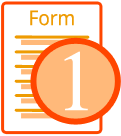Septermber 12, 2010 (Shirley Allen)
FHA’s Energy Efficient Mortgage program (EEM) helps homebuyers or homeowners save money on utility bills by enabling them to finance the cost of adding energy efficiency features to new or existing housing as part of their FHA insured home purchase or refinancing mortgage.
Energy Efficient Mortgage’s recognize that reduced utility expenses can permit a homeowner to pay a higher mortgage to cover the cost of the energy improvements on top of the approved mortgage. FHA Energy Efficient Mortgage’s provide mortgage insurance for a person to purchase or refinance a principal residence and incorporate the cost of energy efficient improvements into the mortgage. The borrower does not have to qualify for the additional money and does not make a downpayment on it. The mortgage loan is funded by a lending institution, such as a mortgage company, bank, or savings and loan association, and the mortgage is insured by HUD. FHA insures loans.
Eligible Borrowers are ll persons who meet the income requirements for FHA’s standard Section 203(b) insurance and can make the monthly mortgage payments are eligible to apply. The cost of the energy improvements and estimate of the energy savings must be determined by a home energy rating system (HERS) or an energy consultant. The cost of an energy inspection report and related fees may be included in the mortgage.
Energy Efficient Mortgage’s can be used to make energy efficient improvements in one to four existing and new homes. The improvements can be included in a borrower’s mortgage only if their total cost is less than the total dollar value of the energy that will be saved during their useful life.
Eligibility Requirements:
- The borrower is eligible for a maximum FHA insured loan, using standard underwriting procedures. The borrower must make a 3.5 percent downpayment. This 3.5 percent downpayment is based on the sales price or appraised value. Any upfront mortgage insurance premium can be financed as part of the mortgage.
- Eligible properties are one to four unit existing and new construction. EEMs may be added to some other loan types, including streamline refinances.
- The cost of the energy efficient improvements that may be eligible for financing into the mortgage is the lesser of A or B as follows:
A. The dollar amount of cost-effective energy improvements, plus cost of report and inspections, or
B. The lesser of 5% of:
- To be eligible for inclusion in the mortgage, the energy efficient improvements must be cost effective, meaning that the total cost of the improvements is less than the total present value of the energy saved over the useful life of the energy improvement.
- The cost of the energy improvements and estimate of the energy savings must be determined by a home energy rating report that is prepared by an energy consultant using a Home Energy Rating System (HERS). The cost of the energy rating report and inspections may be financed as part of the cost effective energy package.
- The energy improvements are installed after the loan closes. The lender will place the money in an escrow account. The money will be released to the borrower after an inspection verifies that the improvements are installed and the energy savings will be achieved.
- The maximum mortgage limit for a single family unit depends on its location, and it is adjusted annually. To find FHA maximum mortgage limits for any county in the country. The cost of the eligible energy efficient improvements is added to the mortgage amount. The final loan amount can exceed the maximum mortgage limit by the amount of the energy efficient improvements
For more information about the FHA’s Energy Efficient Mortgage Program, click here.


